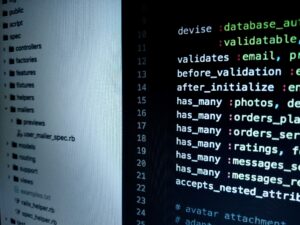Oracle databases are relational database management systems from oracle databases. These support every kind of data management system with different editions, with varying editions of the product, where the users choose the database systems depending upon their needs. The oracle structures are entirely secure and scalable with high performance compared to other market databases. Oracles are owned by oracle corporations and are preferred by several companies for their unique capabilities.
These are potent databases that support the parallel distribution of databases, improved indexing, and much more. Microsoft owns the SQL-based server here with the fundamental aim of creating, manipulating, and managing several databases. There are several factors of a database that a developer considers before making a decision according to your requirements.
In our blog, we are providing a detailed analysis of databases on both sides. You can read our blog and determine how you can use oracle for your organization. The first version of Oracle was developed in 1977 but was released in 1980. The developer Larry Ellison, Bob Miner, and Ed Oades formed a consultancy for software development which later became an oracle corporation. The very first version of oracle also supported the SQL features. This version released the 12c version of developers when the oracle developers were working on 18c and 19c. Every person with basic knowledge of SQL can efficiently execute the queries to transfer data between different databases quickly.
The key features of databases are that make oracle popular among users are:
- It is the first-ever relational database management system that was built entirely for business purposes.
- It can manage huge amounts of data easily
- Helps in improved scalability, portability, and programming
- It is capable of running in over 60 platforms that mainframes apple macs.
- It supports different support systems such as Linux, UNIX, OS X, and windows.
- These are highly data reliable and maintain integrity due to the ACID properties.
- It supports an extensible language market
- It can easily be written in assembly language C and C++.
- It helps a recovery tool that performs database recovery and management.
What Type Of Database Is Oracle?
Oracle databases were developed for direct assessment of data by the users through SQL. Oracles are completely scalable databases with relational database structures to be used by global enterprises. These can be easily used for processing data all across the worldwide market. The databases were used entirely for providing structure to the organization for storing the data electronically in the system. They were earlier known as storage data files with a flat design, where you can separate the information with the help of commas.
Here you can define any number of rows and columns for defining characteristics and structures of every piece of data to increase continuity within a matter of time. The relational matters of databases represent the ideal issues with the help of entities and attributes, which will help further determine. Oracle databases in the present time hold the most significant market shares. The Oracle databases are the competitors of Microsoft SQL servers in the database markets.
The structures of oracle databases and SQL are a bit similar, and they provide benefits while learning database administration. The Oracle databases are supported in various platforms, and they also have different software platforms based on the requirements and budget of the enterprise.
Here is the grading of different types of Oracle databases:
- The enterprise edition supports superior and robust security databases.
- Personal editions are similar to enterprise ones, and they do not exempt the fundamental application cluster structure.
- Express editions are lightweight and limited, and free coding bootcamps and windows and Linux editions.
- The Standard edition comprises essential functions that do not require solid packages for the enterprise edition.
The high point of the oracle database is it can easily split the architecture between the logical and physical databases. This is why the structure is distributed on a large scale among the computer distribution. They can also be used when the data location is irrelevant and open to the users, thus allowing physical structure alterations without affecting any activity. These resources allow flexible data with capacities that can be easily adjusted without degradation of services.
It also allows a robust system without any failure, which could bring down the database. The most significant benefit of SQL is scalability. This makes it more cost-efficient, and the organization can use this for storing massive data. The data stored can be easily configured and accessed without any downtime. Other features of database oracles are:
- Efficient memory for large databases with optimal performances.
- Highly performative in dividing the data table into multi pieces
- It comprises data recovery and recovery manager tools.
Advantage Of Oracle?
Now we will look at the advantages of using an oracle database as it’s essential to go through the classic reviews for proper usage of the oracle database.
- Portability
Oracle databases are ported to all platforms other than its competition. It manages 20 different networking protocols and almost 100 hardware platforms. This makes writing the oracle application easy and safe for operating in the hardware system.
- Customer satisfaction
One of the most significant advantages of oracle is customer satisfaction. This allows the business to upgrade the computer system without overhauling the entire system. This helps in the low-cost evaluation of databases. Additionally, the new version of databases will keep the popular features of older oracle.
- Backup and recovery
It’s better to have your oracle backup online for recovery purposes. This will help in easy on-point recovery for the recovery of databases. For this, you might require a high-performance active mechanism and storage spaces. This will help you with fast and good databases with oracle. Also, these databases will help in improving the performance speed when it comes to transaction and control.
- Reliability
Oracle delivers superior performance in challenging and demanding tasks. They use ACID tools for ensuring the integrity of data stored in the oracle database. The ACID tool tests are vital for data storage to improve the integrity of data storage.
- Flashback technology
There are several reasons for not losing the data stored on the database system. The flashback technology of oracle will help in the recovery of data that is lost incorrectly. The flashback technology is efficient in removing human errors and reducing the database recovery time. This allows simple administrative processes.
- Version changes
Oracle databases help in informing about the significant changes that you need to be prepared for. The Oracle databases provide you with compatible databases which are no longer required for re-writing the application. The users of the v4 oracle database have no longer had any unpleasant experiences when it comes to syntax.
Mention Some Of The Features Of Oracle
Listed below are the critical features of the oracle:
- SQL and PL/SQL support
SQL support is translated, and database types are mapped in the oracle as per the capability. But PL/SQL services are mapped in the non-oracle database with stored SQL functionality. If they have any functionality missing, they can query in simple language, with their issue raised in multiple pieces. This is how you can achieve the desired results by the postponement of the oracle database.
- Heterogeneous replication
Here you get materialized data available on the database oracle. The materialized views are initiated in the table from the non-oracle master site at a particular time. This will help further refresh the operational functions that copy databases and synchronize the copy of the oracle system with a copy of master in the non-oracle database.
- Passthrough SQL
This feature enables you to send the data statement directly to the non-oracle system with the help of PL/SQL without interpreting the oracle database. The quality of the oracle database is beneficial when the operation statements are interpreted with no equivalent oracles.
- Result set support
The database procedures in oracle work in the same way as in other high-level programming languages. They have a fixed number of arguments that could help in returning most values in the result. The oracle datatype has REF CURSOR, where procedures can be stored in processes such as IN and OUT. With the oracle database, the procedure stored has output storage, and this opens doors for SQL statements, and this place handles for output cursor.
- Data directory translations
Every database has a data directory. Data dictionaries are collections of information about the database objects that were created by various systems. But when it comes to relational databases, the data set views the data stored in the database. The information comprises the details of the user on the system regarding the object they created. But the information on the databases organizes the technique that uses the information differently.
- Date time data type
Oracles have five significant types of date-time databases. These services have generic code support that supports date-time data types in SQL and stored procedures. These heterogeneous services do not help the date-time data type in the dictionary translations, which comprises data dictionary translations.
- Two-phase commit protocol
The heterogeneous protocol has two phases of commitment protocol. This helps in extending the support of the gateway and support system. You can look into your specific gateway for any further details.
What Is Oracle Database Architecture?
Oracle is a relational database management system by oracle corporation.
An oracle database at least consists of one instance and database. Instances here are combinations of memory and processes that run across the program for running and installation. And the database here refers to the set of files that stores data. There are times when database instances are referred to the entire database. Here you need to understand the difference between the two:
- You can start a database instance without accessing database files
- The data instance can have only one file at a time.
- Every instance can access the same data.
- A database can exist without instance, as it’s just a set of files.
The essential task of an oracle database is to store data. The oracle database mainly has two types of architects:
- Physical oracle database
They are simple structures to store files. You can execute creating a database when you wish to create a new database.
The physical oracle database has data files that contain accurate data. They also control every file that further holds the metadata. They also have an online redo dog with two or more redo files to record the changes made to the files.
2. Logical oracle database
Here the oracle database uses logical storage structures. They block data corresponding to the number of bytes on the disk. They also have a specific number of the extent to which you can create logical data continuously to store the data of a particular type.
They also provide a specific type of extent allocated to the segments for storing the database agreement. The databases here are divided into tablespace for logical units. Every table here consists of one file segment.
What Is The Difference Between SQL and Oracle?
Following are the essential differences between oracle and SQL:
- Oracle is owned by oracle corporation. SQL is owned and developed by Microsoft.
- Oracle uses PL/SQL procedural language. Whereas SQL servers use T-SQL procedural language
- Oracle can be a bit complicated to use, while SQL is simple
- Oracle supports packages while SQL does not
- Oracle is considered more powerful as compared to SQL. On the contrary, SQL is less powerful.
- Users can share databases in oracle. While SQL does not allow sharing of databases among the users.
The Final Thought
Many things present the excellent features of oracle databases. The user should know every concept relating to the oracle database for complete utilization. In our blog, we have tried to mention most of the things about oracle databases.
And by now, you would be aware that oracle databases are simple to understand and implement.
<< What Is A Docker Used For: Beginners Full guide (2022) Java script programming language >>
How useful was this post?
Click on a star to rate it!
Average rating 5 / 5. Vote count: 3
No votes so far! Be the first to rate this post.









